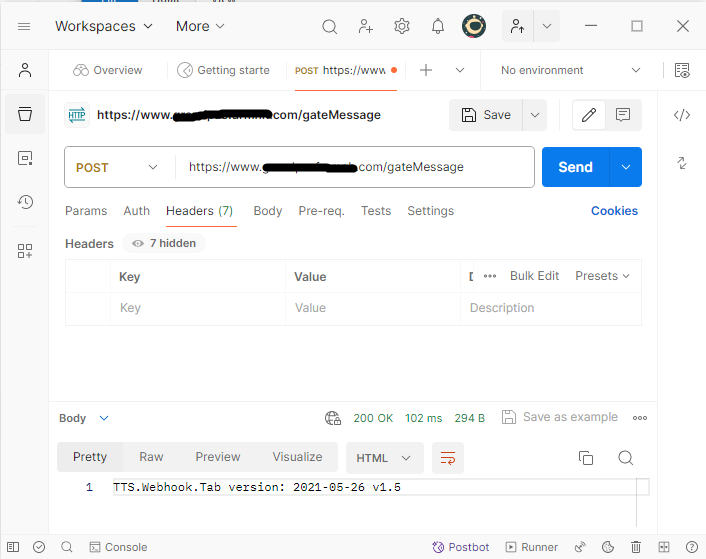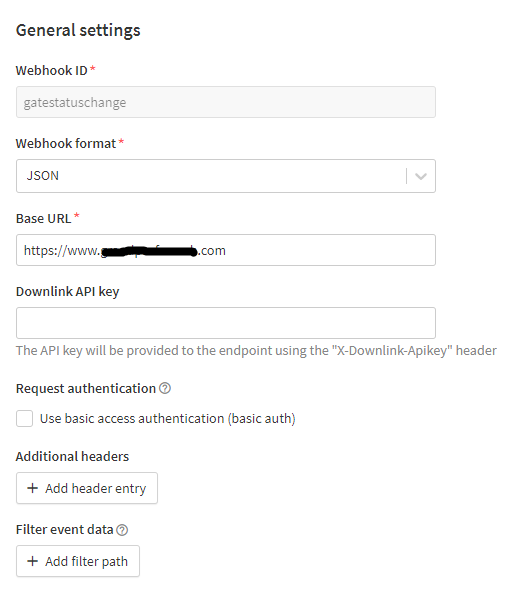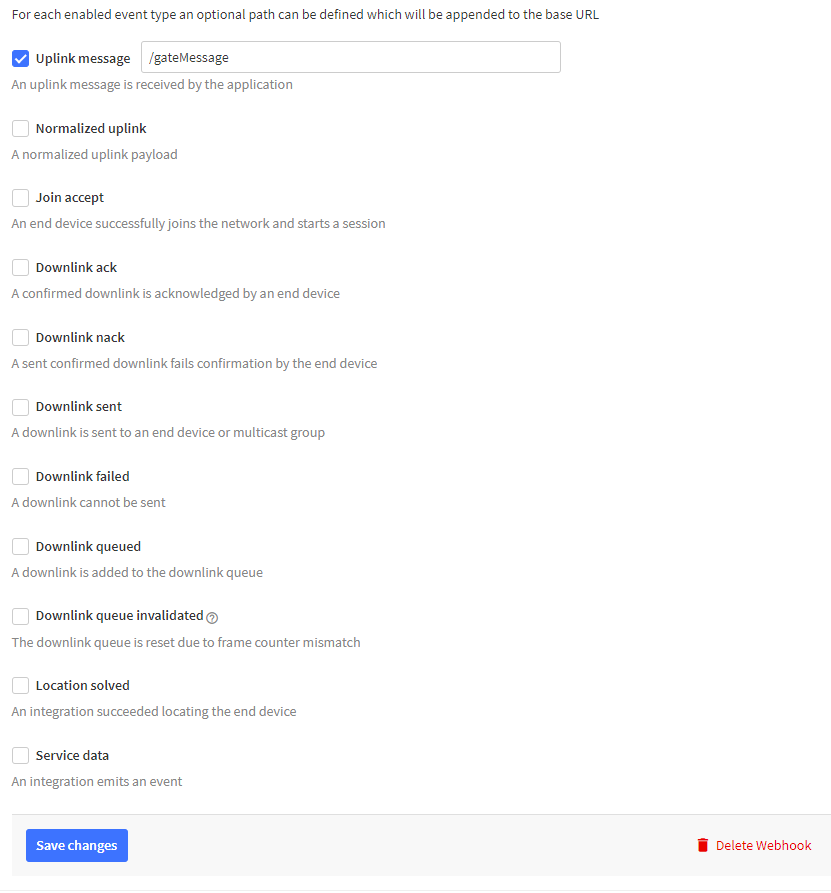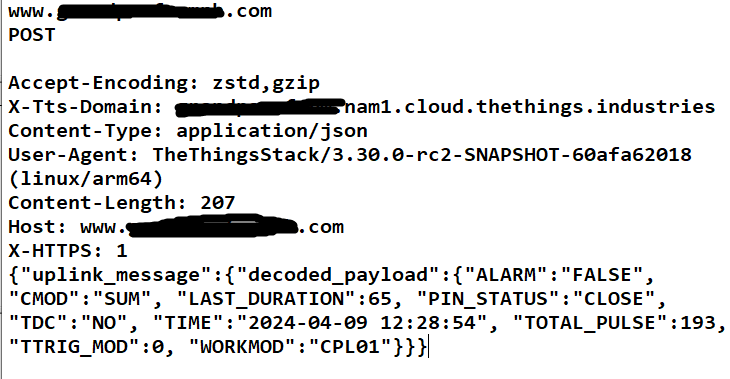I have a Dragino CPL03-LB connecting through a Dragino gateway to TTN. I then forward the Uplink messages to my own php webhook on my website where I intend to store data in a MySQL DB.
The calls to my webhook are being made successfully (i.e. no errors in TTN).
However, the requests are coming through as GETs rather than POSTs. And, of course, there is no JSON data accompanying the request.
After fiddling around with my own script I found this script to test with - TheThingsStack-Integration-Starters/WebHook-to-Tab-PHP/TTS.WebHook.Tab.php at main · descartes/TheThingsStack-Integration-Starters · GitHub
The script is hitting the “die” on line #10.
It seems from what I have read that TTN should be sending the request as a POST rather than a GET!
I did see another post about supplying the complete URL so I made sure I was doing this - mywebsite.com est disponible à l´achat - Sedo.com
Any thoughts?
Thanks,
Rodney




